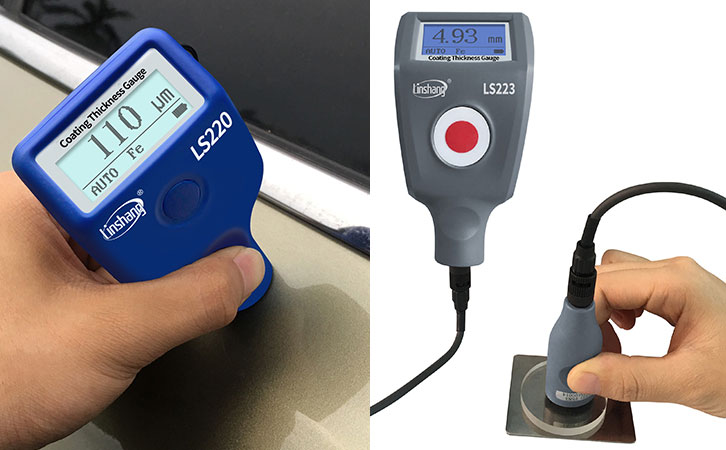Coating Thickness Gauge Working Principle and Application Field
A coating thickness gauge is a portable instrument that can non-destructively measure the thickness of a non-magnetic coating on a magnetic metal substrate and the thickness of a non-conductive coating on a non-magnetic metal substrate such as copper, aluminum, zinc, tin, and the like. Let's talk about the Coating thickness gauge working principle and application field.
1. Coating thickness gauge working principle
(1) Magnetic thickness measurement principle:
When the probe is in contact with the coating, the probe and the magnetic metal substrate form a closed magnetic circuit. Due to the presence of the non-magnetic coating layer, the magnetic resistance of the magnetic circuit changes, and the thickness of the coating layer can be calculated by measuring the change.
(2) Eddy current thickness measurement principle
An electromagnetic field is generated in the coil by using high-frequency alternating current. When the probe is in contact with the cover layer, an eddy current is generated on the metal substrate, and a feedback effect is generated on the coil in the probe, which can be derived by measuring the magnitude of the feedback effect. The thickness of the cover layer.
2. Coating thickness gauge application field
The coating thickness gauge can conveniently and non-destructively measure the thickness of the non-magnetic coating on the ferromagnetic material, such as the coating of zinc, copper, chromium, etc. on the steel surface or the thickness of the coating such as paint, enamel, fiberglass, spray, asphalt.
The instrument is widely used in machinery, automotive, shipbuilding, petroleum, chemical, electroplating, spray, enamel, plastic and other industries.
The above is the coating thickness gauge working principle and application field.
- High precision coating thickness gauge for used car
- Automotive paint protection films coating thickness gauge
- Plating Thickness Measuring Instrument for Detecting Anti-corrosion Coating
- Linshang LS220, LS191, LS160A– Necessary for Car Cover Inspection
- Coating Thickness Gauge for Second Hand Vehicle
- Zero Adjustment Step of Coating Thickness Gauge
